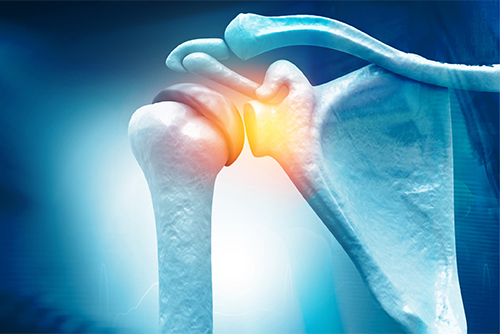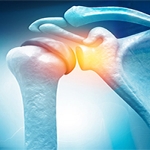
Compared to any other joint in the human body, the shoulder receives the highest range of motion and use by being a ball and socket joint. The upper portion of the arm and bone form the ball and fits neatly into the shoulder blade's shallow socket. Keeping the bones of the shoulder joint in place are the 4 rotator cuff muscles that stabilize the joint as you move your arm across multiple planes of motion; when participating in sports or physical activity that require repetitive overhead movements, the risk of rotator cuff injuries increases.
Each year, almost 2 million people in the United States visit their doctors because of a rotator cuff problem. A tear in the rotator cuff will cause the shoulder muscles to weaken and make daily activities difficult and painful. Rotator cuff injuries are typically attributed to trauma, tissue degeneration, and shoulder impingement. Most rotator cuff injuries are treated with a combination of pain control, rest, and rehabilitation. More severe injuries may respond better with injections and possibly surgery.
Degeneration occurs slowly:
While ageing, overuse of the shoulder over time causes degeneration of the rotator cuff. Especially for people who require frequent raising and lowering of the arm, carpentry, sports and roofing are common occupations in which rotator cuff damage occurs. Over time, tiny tears develop in the rotator cuff, which causes shoulder weakness, and larger tears become more common.
Acute injury caused by a single traumatic event:
The rotator cuff's tears and strains have resulted from a one-time traumatic event, like a fall with an outstretched arm or lifting heavyweights. This creates a tremendous strain on the shoulder. With rest and proper treatment, these injuries may heal over time.
Shoulder impingement:
Shoulder impingement syndrome is a common shoulder condition seen among active adults. This condition is closely related to shoulder bursitis and rotator cuff tendinitis. Impingement syndrome is characterized by pain in the shoulder due to inflammation of the rotator cuff tendons. Impingement syndrome often occurs with repetitive overuse types of activities as seen in sports like baseball, tennis, and volleyball. It can also be the result of an acute strain or traumatic injury where the tissue stays inflamed.
When diagnosing a rotator cuff tear and estimating the severity, your doctor must first rule out other causes for the pain. Shoulder bursitis, shoulder arthritis, and cervical spine disease can all resemble a torn rotator cuff. If you suspect you have a rotator cuff problem, consult Dr. Ryan Colley D.O., for an in-depth evaluation and personalized treatment recommendation.
Dr. Ryan Colley attended medical school at Midwestern University Arizona College of Osteopathic Medicine. He completed a residency in orthopedic surgery at Ohio University, studying all orthopedics fields, including trauma, joint replacement, sports medicine, pediatrics, and hand surgery. He focuses on all aspects of upper extremity joint replacement, reconstruction, trauma, and arthroscopy. He also performs robotic-assisted total knee replacement. He has authored several publications and book chapters. He takes a holistic approach to improve the quality of life for his patients. In his free time, Dr. Colley enjoys time with his wife and two children. They love to hike, fish, snowboard, and travel.





 Book an Appointment
Book an Appointment
 Patient Portal
Patient Portal